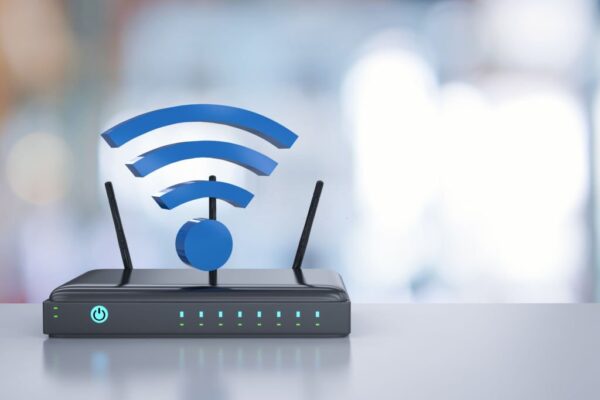Wireless communication systems have transformed the way that healthcare providers, including nurses, communicate and exchange information. These systems use a range of technologies and protocols to transmit and process data and information wirelessly, making it possible for healthcare providers to communicate with each other and access patient information in real time.
One of the main benefits of wireless communication systems in nursing is their ability to improve the efficiency and effectiveness of healthcare delivery. By enabling nurses to access and share patient information and communicate with other healthcare providers in real-time, these systems can help to reduce the risk of errors and improve patient outcomes.
In addition to improving efficiency and effectiveness, wireless communication systems can also help to improve patient safety by enabling nurses to communicate more easily and quickly with other healthcare providers. For example, if a patient’s condition changes suddenly, a nurse can use a wireless communication system to alert other healthcare providers, who can then respond more quickly and effectively.
Wireless communication systems can also help to improve the quality of care by enabling nurses to access and share important information and resources more easily. For example, nurses can use these systems to access guidelines and protocols, as well as to communicate with experts and colleagues who can provide guidance and support.
There are a number of different types of wireless communication systems that are commonly used in nursing, including:
- Mobile devices: These devices, such as smartphones and tablets, enable nurses to communicate and access information on the go.
- Wireless networks: These networks allow nurses to access patient information and other resources
Wireless Communication System
One of the fastest-growing technologies in the world today is wireless communication. With the increasing use of wireless devices in schools, colleges, offices, factories, homes, etc., the need for wireless communication has also increased a lot.
The main advantage of wireless communication is that this method does not require any cable connection for communication between the two devices, so the devices can be taken anywhere without leaving any specific place.
Devices such as mobile phones, laptops, tablets, radios, televisions, etc. have come under wireless communication for this purpose. From any one place, any professional can do his work from anywhere in the world.
Not only that, but from opening the garage door of the house from a distance, computer mouse, keyboards and television remote controllers, telephones, etc. are all now wireless. Simply put, the effects of wireless communication can be seen almost everywhere around us.
The necessity of Wireless Communication
1. Anywhere Anytime: From any one place, any professional can use the internet anytime or work from anywhere in the world through wireless communication.
2. Improved productivity: Employees, students, professionals, and everyone else who uses the Internet, if they can work on their own via the Internet or any other wireless network at a time of their choice, will have both productivity and mobility at work.
3. Communication with Remote Mines: Professionals working in remote areas where it is expensive to network with them can communicate with the outside world through wireless networks. Moreover, people in rural areas can easily get help or contact doctors in urban areas with the help of wireless communication.
4. Entertainment as per demand: Anyone can enjoy their favorite songs, movies or dramas, or any other entertainment, educational, or news program on the internet anytime anywhere through the wireless network.
5. Emergency Alert: Alerts can be easily delivered via wireless in any emergency. Moreover, even if other communication systems are broken due to various natural calamities, it is possible to easily communicate with different places in such emergencies through wireless.
Here are some common examples of wireless communication:
- Mobile phones are the most popular example of wireless communication. Mobile phones can be used to talk to anyone remotely from anywhere.
- .With GPS (GPS Global Positioning System) anytime anywhere, water and sea vehicles can know their location on the earth.
- Nowadays computer components are also becoming wireless. Wireless keyboards, wireless mice, wireless headphones, etc. can be connected to a computer without any wires. home Cordless phones are being used in homes, which operate within a certain range of the home.
- Home TVs, DVDs, Blu-ray, and other devices have also become wireless. Game consoles PSG, PS4 or Xbox, or FM radio, and hi-fi sound systems are all using this technology.
- With satellite television, a user gets the opportunity to watch hundreds of TV channels. Nowadays, with the help of wireless LAN, internet access is available in all places from home to offices, courts, factories, airports, shopping malls, etc. With just a wireless device (laptop, smartphone, tablet, etc.) it is possible to connect to that network and connect to the Internet in an instant.
- The current mobile phone technologies such as GSM, GPRS, EDGE, UMTS, HSPA, LTE, etc. are all designed with wireless communication in mind. With these technologies, not only talking but also any data exchange or internet usage can be done.
Wireless technology has been developed for a number of purposes. The objectives are:
- Weight complexity: Each device needs to be different. As the number of devices in a system increases, so does the number of wires connected to them. Lots of wiring connections make the whole system very complicated. The entire system also costs a lot to maintain. Wireless technology is needed to get rid of this complication.
- The small size technology should be small in size. This makes it possible to easily integrate it with any device. For example, wireless technologies like Bluetooth and Wi-Fi have been added to mobile phones without any extra weight.
- Low cost: The cost of the technology should be low so that it is readily available to everyone. Low power: To run the technology will require very little electric power.
- A number of wireless technologies based on these purposes are currently gaining widespread popularity. Bluetooth, Wi-Fi, and Wi-Max are some of the popular technologies.
Bluetooth
The technology is named Bluetooth after King Harold Bluetooth of Denmark. This technology was started through a project of Rixon company. Bluetooth is the first technology to connect a variety of devices (mobile phones, headsets, keyboards, mice, etc.) together without it.
Bluetooth is so popular for its low cost and ease of use that Bluetooth is now widely used everywhere, even in cars. Bluetooth was created to communicate over short distances. Its working range is 10 meters, which means that all Bluetooth devices within 10 meters can communicate with each other automatically.
Since it works in a small range, it also takes much less power. The device on which it is connected (e.g., mobile phone), its work goes with its power. A short-range network based solely on Su-Tooth communication is called PAN (PAN Personal Area Network). An organization called Bluetooth Special Interest Group controls the development and standardization of this technology.
Its members include more than 15,000 organizations involved in telecommunications, computing, networking, and consumer electronics.
Bluetooth features
- Bluetooth devices typically operate on 2.4 GHz bandwidth.
- Bluetooth devices can typically communicate with any other Bluetooth device within 10 meters.
- Bluetooth cannot be blocked by walls or any other object in that way.
- Bluetooth technology allows you to connect multiple devices at once.
- Bluetooth Minimum Deterrence is about 1 megabit per second. The current version of Bluetooth is Bluetooth 4.0, with a data rate of about 26 megabits per second.
- A network made of Bluetooth is called a piconet.
- A piconet cannot have more than 6 Bluetooth devices. One of the 6 devices is called Master and the other 6 are called Slave. The master device controls the rest of the slaves.
- A Bluetooth network made up of multiple piconets is called a scatternet. It is possible to connect more than 6 Bluetooth devices in a phased manner with Scaternet.
Bluetooth facility
- It requires a very small amount of electric power. The amount of power is less than 0.001 watts.
- With low power, Bluetooth can be easily integrated with any device.
- This is a completely automated method. All Bluetooth-enabled devices can automatically detect the presence of other Bluetooth-enabled devices.
Bluetooth difficulty
- It works in a very small range. If you go more than 10 meters away from the connection.
2. Bluetooth Detergent is relatively low compared to other wireless technologies.
Using Bluetooth
- Bluetooth is used to connect wireless mice, keyboards, headphones, etc. to the computer.
- Various devices at home (e.g., TVs, game consoles, mobile phones, computers, sound systems, etc.) use Bluetooth to communicate with each other.
- At the hospital, various sensors use Bluetooth to send the necessary information from the patient’s body to the central database computer.
WiFi
WiFi (Wireless Fidelity) is a popular technology for wireless networking and high-speed internet connection. The range of Wi-Fi technology is about 100 meters larger than Bluetooth.
WiFi has four different widely used standards: 802.11a, 602.11b, 602.11g, and 602.11n. Wi-Fi is designed to connect various devices to WLAN Wireless Local Area Network. Wi-Fi’s 602.11b and 802.11ngi standards are the two most popular.
It is widely used in cafes, restaurants, etc. The main difference between the two standards is that the data transfer rates of the two are different. The transfer rate is up to a maximum of 54 megabits/second.
The range of 602.11g is even larger, about twice that of 802.11g. Deterioration of 602.11n can be up to 600 megabits/second. The 802.11 standard is very expensive, so it is not used everywhere. A wireless access point is required to connect a computer, mobile phone, or any device to the Internet with the help of Wi-Fi.
Features of WiFi
- Wi-Fi technology uses 2.4 GHz and 5 GHz bandwidth.
- Wi-Fi devices can typically communicate with any other Wi-Fi device within 10 meters to 100 meters.
- To create a Wi-Fi network, you need to create a hotspot or access point. Any device with a Wi-Fi facility can be connected to the network through this hotspot or access point.
- Wi-Fi has some standards, such as 602.11a, 602 11b, 602.11ngi, and 802.11n.
- Standard Wi-Fi data rates can range from 10 megabits per second to 600 megabits per second.
- The security of the Wi-Fi technology is much stronger than that of Bluetooth.
- An organization called the “Wi-Fi Alliance” controls everything in this technology.
WiFi facility
- Wi-Fi uses unlicensed frequency bands, saying it does not require any kind of license to use.
- Uses Wi-Fi in places where it cannot be taken (e.g., in open space or in a historic setting). Networks can be created.
- Wi-Fi products are very easy to market.
- The cost of using Wi-Fi is now relatively low due to increased competition among Wi-Fi service providers.
- Supports WiFi network roaming. This means that a user can connect from one Wi-Fi network to another Wi-Fi network with his mobile device.
- Good security is provided to prevent anyone from intruding on Wi-Fi networks or devices.
- Wi-Fi standards are the same worldwide. Users of one standard can be connected to the network of that standard anywhere in the world.
WiFi difficulty
- Wi-Fi devices require more electric power than Bluetooth.
- Wi-Fi uses unlicensed frequency bands, which often use a variety of other devices (Bluetooth, microwave ovens, cordless phones, video transmitters, etc.). Using the same frequency band with other devices can interfere with Wi-Fi.
- The range of Wi-Fi networks is limited. The range is 35 meters inside the house, and the maximum outside the house is about 100 meters.
- Despite the high security, any user’s personal information is likely to be stolen from a Wi-Fi access point (the point at which a device is connected to the network).
- When someone attacks the free access points, it is very difficult to find the attacker.
Use of Wi-Fi
- Wi-Fi is commonly used to access high-speed internet without wires.
- Wi-Fi hotspots make it possible to connect to the Internet at home through a variety of devices.
- At present, Wi-Fi hotspots are set up in various shopping malls, restaurants, airports, hotels, hospitals, etc., so that the Internet can be easily accessed through laptops or mobile phones.
- Huge Wi-Fi networks have been set up across cities like California, Florida, Sunnyvale, etc. in the United States so that the citizens of these cities can use the internet easily. Similar networks are being planned in Seoul, Korea, and London, United Kingdom.
- At present Wi-Fi service is being introduced in various educational institutions. As a result, students can easily browse the internet with a laptop or mobile phone while sitting at school.
WiMAX
WiMAX for Wi-Fi Communication with MicroWide
Ch 702.18. This standard falls under Druman (WMAN – Wireless Metropolitan Area Network). The range of Wi-Max is therefore much wider than Wi-Fi, about 50 kilometers.
It also has a higher data transfer rate, a maximum of 60 megabits/second. As a result, it is possible to provide a high-speed internet facility. Wi-Max works in two frequency bands, one is 2 GHz 11 GHz, the other is 10 GHz 8.
Working on a much larger scale, Wi-Max is used to connect networks between multiple cities. An organization called the Wi-Max Forum is responsible for maintaining the technology.
Features of Wi-Max
- WiMAX is based on iTriple-E’s standard 602.18.
- Multiple bandwidths are used in WiMAX technology. Most used
- Bandwidths are 2.3 GHz, 2.5 GHz, and 3.5 GHz.
- There is a mobile version of WiMAX called Mobile WiMAX.
- The range of Wi-Max is about 50 kilometers.
- There are three versions of WiMAX. The versions are WiMAX 1: 0, WiMAX 1.5 and WiMAX 2.0. Of these, WiMAX 2.0 has the highest data rate, at about 1 gigabit per second.
Advantages of Wimax
- A WiMAX station can connect hundreds or thousands of users.
- Creating a network takes less time than creating a network through its medium.
- It is possible to create a network with a speed of about 10 megabits / second across an area of 10 km.
- Wi-Fi hotspot internet service can be provided through WiMAX in remote areas.
The disadvantage of Wimax
- Line-off-site connections are required between the antennas to send data remotely.
- Storms can disrupt network operations.
- Wi-Max networks require much more electric power than Wi-Fi.
- WiMAX network management is expensive.
- As the number of users increases, the network’s data is likely to decrease.
Mobile Communication
Mobile is an English word, which means moving. That is, the one who has speed in between is called a mobile. Devices that are not confined to any place, but move from one place to another without any problem in their work, are known as mobile devices in the technology world.
For example, mobile phones. This phone is not connected to any cable connection like a normal phone, so it can be moved independently from one place to another and even if it is transferred, its work is not interrupted.
The first wired telephone was introduced in 18. In 1895, Bappani scientist Sir Jagadish Chandra Bose invented the first wireless communication. AM Amplitude Modulation in 1934
In this way, mobile communication starts. During the Second World War, FM (FM Frequency Modulation) system was introduced as a better method. This was followed by the advent of the mobile telephone in 1947.
Mobile telephones were technically limited and very expensive at the time so for almost three and a half decades after their advent, they did not gain much popularity. When Bell Laboratory introduced the concept of cellular in 1970, mobile telephones became very popular. At present, that popularity is continuously increasing.
A structured picture of how a mobile telephone network works is shown in Figure 2:23. The mobile station shown in the figure can be any mobile telephone device. If a call is made from a mobile phone, it is first transmitted to the nearest base station.
Base stations are the antennas that can be seen on the roofs of various buildings in urban areas or telephone towers that can be seen in open fields in rural areas. The base station transmits the received call to the main switching center.
The main switching center sends that call to the appropriate telephone network and communicates with the desired customer. Notably, the connection between the mobile phone and the base station is wireless.
However, most of the time the connection between the base station and the main switching center or the connection between the main switching center and other parts of the network is provided by it.




